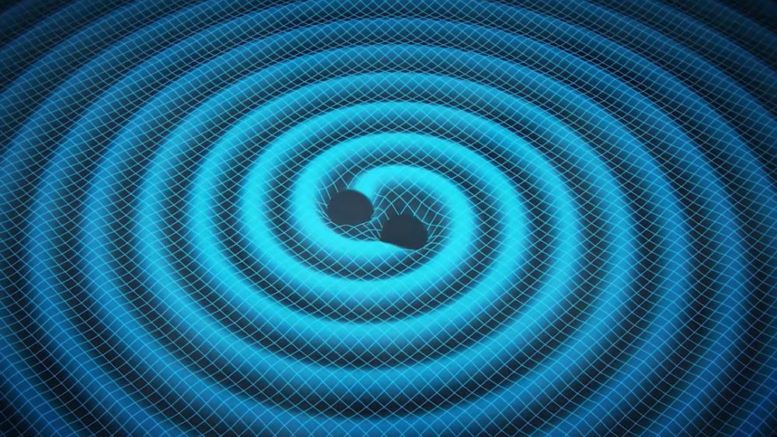Gravitational Waves can be defined as disturbances in the curvature of spacetime, generated by accelerated masses, that propagate as waves outward from their source at the speed of light. This means that gravitational waves transport energy as gravitational radiation, which is a form of radiant energy. These were first proposed by Henri Poincaré in 1905, and were predicted in 1916 by Albert Einstein using his general theory of relativity. It is worth noting that newton’s law of universal gravitation does not provide for their existence.
It wasn’t until 1993, upon the discovery of the Hulse-Taylor binary pulsar that the first evidence was provided. That said, this evidence of gravitational waves by the Hulse-Taylor binary pulsar only offered indirect evidence.
In this article, we are going to discuss a few of the different possible sources of these waves along with their properties and behaviors.
Sources
- Binaries emit gravitational waves as these waves will carry energy away from their sources, which in the case of orbiting bodies is associated with an in-spiral or decrease in orbit.
- Black hole binaries emit gravitational waves during their in-spiral, merger, and ring-down phases. The largest amplitude of emission occurs during the merger phase, which can be modeled with the techniques of numerical relativity. The first direct detection of gravitational waves, GW150914, came from the merger of two black holes, which was found by LIGO in 2015.
- Supernovae will emit large amounts of energy during their explosions. Unless there is perfect spherical symmetry in these explosions, there will be gravitational radiation generated.
- Spinning neutron stars are mostly symmetrical; however, in some cases, there could be slight deformities on the surface that can emit these waves.
- If inflation during the early universe during expansion was not symmetric in all directions, it could have resulted in emissions of detectable gravitational radiation. Although this gravitational wave background could be detectable, current technology is not yet advanced to be able to do so.
Properties and behavior
- Energy, momentum, and angular momentum should be carried by gravitational waves.
- Redshifting of gravitational waves should exhibit shifting of wavelength due to the relative velocities of the source and observer. Moreover, due to distortions of space-time, such as cosmic expansion, gravitational waves should also be shifted. This is the case even though gravity itself is a cause of distortions of space-time, but it’s worth noting that redshifting of gravitational waves is different from redshifting due to gravity.
- Significance for study of the early universe are a result of the weakness of the coupling of gravity to matter. Therefore, gravitational waves experience very little absorption or scattering, as they travel over astronomical distances. This is a result of these waves being expected to be unaffected by the opacity of the very early universe.
- Determining direction of travel is tough when detecting these waves using 1 detector; however, with the detection by several different detectors can help determine the source of the waves.
To learn more about the discovery by LIGO and what it is like to take a tour of LIGO Hanford, feel free to check out our article here.
There are several different ways to detect gravitational waves, but with the discovery by LIGO, more of the proven types of detectors will be build. For a more detailed look into a few potential future promising Gravitational Wave Detectors, check out our article here. These discoveries will help provide an increase in interest and research surrounding gravitational-wave astronomy.

Be the first to comment on "Gravitational Waves: An Introduction"